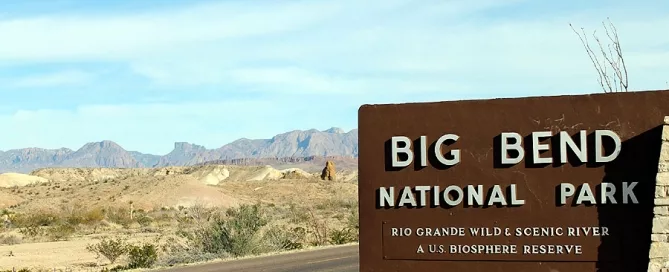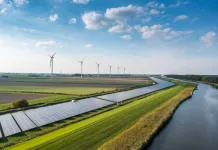Imagine gazing up into some of the darkest, most pristine skies in the United States, free from the glow of light pollution. This star-studded experience awaits at Big Bend National Park, an ideal sanctuary for astronomy enthusiasts and nature lovers alike.
Challenges of Charging in Remote Areas
However, Big Bend’s seclusion comes with its own set of challenges, particularly when it comes to staying powered up. Until recently, the park’s isolation from major electrical grids meant that electric vehicle (EV) users had very limited options for charging—often relegated to slow destination chargers at local businesses or RV parks.
The advent of Tesla‘s Supercharger in nearby Alpine, Texas, has started to revolutionize access to the park. As of January 18th, drivers now find themselves a mere 100 miles away from the nearest rapid charger. What’s more exciting is that this V3 charging station will soon support an array of EVs with appropriate adapters. However, the journey is still a 200-mile round trip, pressing the need for more convenient Level 2 charging options for park visitors.
Terlingua’s Pivotal Role in EV Accessibility
Good news is on the horizon for both EV enthusiasts and eco-conscious glampers. Plans are in motion to construct an 8-stall V3 charging station with North American Charging Standard (NACS) compatibility right in Terlingua, thanks to PlugShare and Supercharge.info intel. Situated at Basecamp Terlingua, this new hub will reduce the journey to just 50-60 miles across the park, elevating ease of access and encouraging more sustainable tourism initiatives.
Enhanced Visitor Experience with Upcoming EV Infrastructure
The benefits of these developments are vast. For travelers towing trailers, the new charging facility promises the ability to run amenities like air conditioning while enjoying several days within the park’s confines—without range anxiety. Beyond the comforts of Big Bend National Park, these improvements extend to Big Bend Ranch State Park, with its array of outdoor activities and unique landscapes, now becoming a viable destination for EV travelers.
More than just camping adventures, the growing charging network is even nudging open the door to cross-border excursions into Mexico. While certain range limitations remain, as Mexico’s EV charging infrastructure flourishes, these routes may soon become popular for both leisure and commercial EV-based travel.
Future Prospects and Economic Incentives in the EV Ecosystem
Despite Tesla’s commendable progress in charging accessibility, there’s a vast landscape of opportunity for additional infrastructure across the region. The US-90 corridor craves expansion, with towns like Marfa, Fort Davis, and Valentine in need of further EV support. Moreover, Guadalupe and Carlsbad National Parks also stand as prime candidates for bolstered charging solutions, with companies like FreeWire Technologies offering innovative battery-storage powered stations.
The evolution of the charging network is inevitable. It’s not just a matter of if, but who will capitalize on the growing demand for widespread, accessible EV charging points. As EV adoption accelerates, Big Bend National Park showcases how preserving natural beauty can harmonize with the advancing electric transportation era.

























